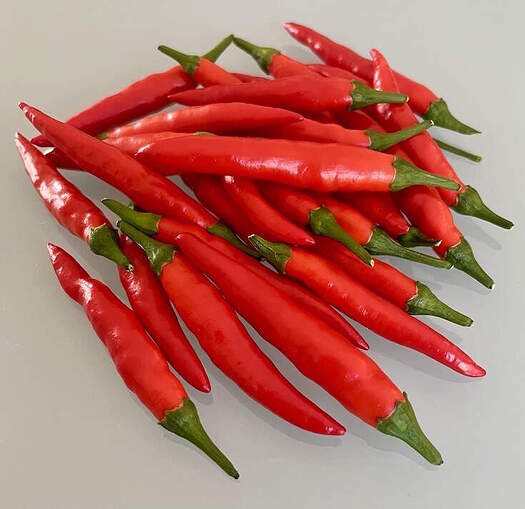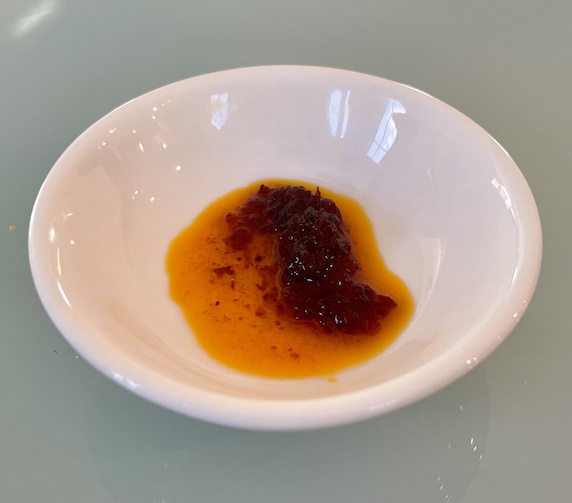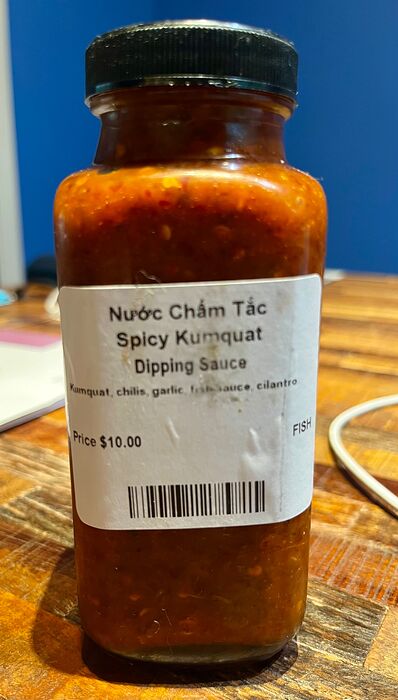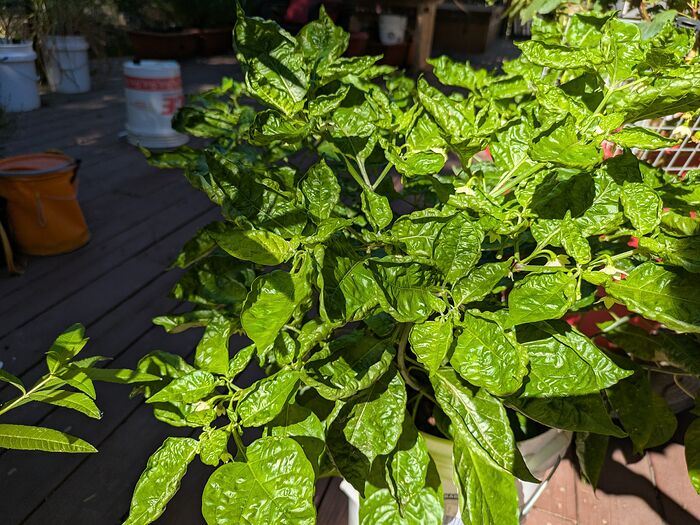Not sure if anyone else is especially interested in this topic, but I thought I’d share an experiment I did today. And if it fails to strike a chord with anyone else, that’s fine, it will just be my own log for future iterations!
Earlier this year I had some extra space in my garden, and on walking through the local garden center I randomly bought a couple of plants simply labeled “Calabrian Chili.” Not sure what to expect, nor with much in mind for them.
What I got, after a long wait, were hundreds of these things:
These are, I now know, “sigaretta” peppers and there are in fact a lot of varieties of Calabrian chilis.
In any case, these are thin-walled, very flavorful, fairly hot, and absolutely packed with seeds. I don’t like to eat pepper seeds - I find them at best flavorless, at worst bitter, texturally not at all good, and some varieties like Thai bird chilis, seem to cause me GI distress. I still had no clue what to do with all of these peppers, so as I harvested them going into fall I began to deseed them and freeze the bodies until I came up with some sort of prep. (Aside: This whole thing was a total pain in the ***. In the future I’m going to try to find and grow the “naso di cane” variety instead.)
At some point I had a business trip to DC and ate dinner at a place there called Queens English. Decent food (not amazing), but what did stick with me was the house chili oil, which I was told by the waiter was made with fresh chilis, and flavored only with garlic, salt, sugar, and MSG. This chili oil was like none I’d tasted before: Soft and jammy, not “crispy” at all, very garlicy, a bit sweet, and deeply flavorful. Inspiration struck and I knew what I was going to do with the Calabrian chilis.
I googled, and googled, and googled some more. There aren’t a ton of recipes out there for fresh chili oil. (In English, at least. A Reddit thread I found along the way said that there are many in Chinese, but I couldn’t figure out how to make Google give me those.) What I found basically said to chop up the chilis in a food processor with garlic, then cook them in oil, starting cold, until they stop bubbling – thereby indicating the the surface water is driven off – and then to add seasonings. Ratios of chili to oil and garlic, not to mention suggested seasonings, were all over the place. I also didn’t like the idea of adding dry salt or sugar to an oily mixture after cooking; would it even mix in?
In the end I cobbled together my own recipe by taste, eye, and what I happened to have:
- 300g de-seeded pepper bodies
- 100g garlic whole cloves
- 1.5 tsp MSG
- 1 tsp kosher salt (Diamond)
- 2 tsp sugar
- 1c neutral oil (I used avocado, because it’s what was open in the cabinet)
I combined everything but the oil in my food processor and pulsed until fairly finely chopped – pieces maybe in the 2mm range. I wanted the powdered ingredients to be able to interact with the water ahead of having the oil in the mix, and this seemed to do the trick.
I put this into a saucepan, added the oil, and started cooking, stirring regularly. Most of the recipes said that the bubbling would abate after 20 minutes. That didn’t happen; actually, the bubbling never stopped. Around 50 minutes in, I noticed that I was getting a lot more residue sticking to the bottom of the pan, and that some of it was starting to get uncomfortably dark, and that’s when I stopped cooking.
End result: Around 300mL of product, which looks like this:
It’s oily, but much more about solids than oil. It’s quite thick and mounds easily. I think I probably could have stopped cooking five minutes earlier than I did. The texture is very close to what I wanted but a touch more caramelized than I think would be ideal. And you can see that the bright red color has faded to more of a brown. (The inspiration oil was also edging toward brown, but less so than what I’ve done here.)
Taste, pretty good! I think I could have gone a bit heavier with the garlic; it’s not quite as present as I would like. But that may be due to the slight overcooking. Seasoning is pretty close to my ideal; maybe just barely too salty. Mixing in the seasonings before the oil seemed to work nicely. Some acidity could work well here too, so maybe I’ll try mixing in some vinegar when I’m eating it.





